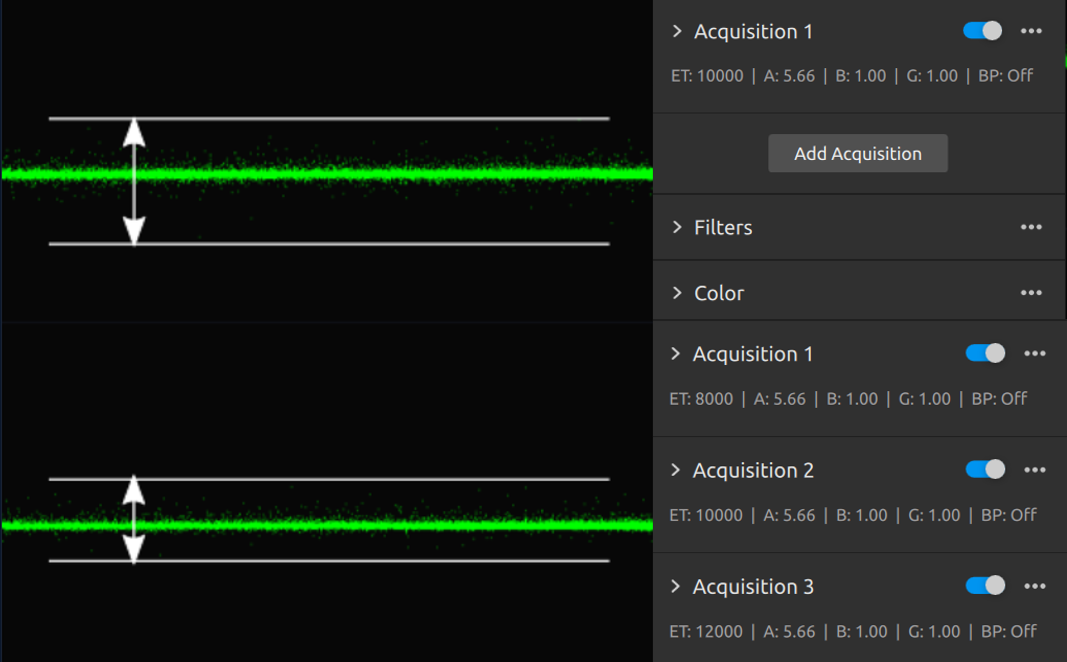Dealing with Smooth 3D Edges
保留 3D 边缘对于具有精细细节/小特征的对象以及薄且重叠的对象非常重要。此外,此类几何复杂工件的物体检测和姿态估计的准确性依赖于保持其真实的形状和明显的深度差异。
然而,散焦和过度过滤等某些因素可能会平滑 3D 边缘,从而对点云的形状产生不利影响。在本文中,我们讨论解决 3D 边缘过度平滑问题的策略。
如何改善物体的形状,使其边缘更明显、深度差异更清晰?
Choose the right camera
Some Zivid camera models have a narrower FOV and a higher resolution 2D camera, allowing them to capture finer details at the same distance. When selecting a camera, check the distance you would use and choose the model that provides the best spatial resolution for that range. Make sure your chosen distance is within the camera's optimal range. Useful tools for selecting the camera:
Physical setup
将相机放置在更靠近场景的位置。虽然投影仪的发光功率是有限的,但投影仪与场景的接近程度决定了照度。这种更近的距离增强了信号,同时环境光的噪声保持不变。更强的信噪比可以提高数据质量和置信度,从而增强点云中的形状和边缘。此外,较短的成像距离提高了空间分辨率,从而能够捕获点云中更精细的细节。
Use the right presets
For the Zivid 2+ and 3 cameras, we offer dedicated presets for this specific use case that provide high resolution point clouds. It is important to note that utilizing these special presets can result in reduced dynamic range, leading to potential data loss, particularly on dark and specular surfaces. However, in certain applications and algorithms like 3D template matching, sacrificing some data to achieve improved 3D edges is worthwhile. This is because the edges do play a critical role in ensuring accurate matching, in comparison to large flat surfaces, for instance.
应用 |
捕获时间 (3D) |
相机设置 |
||
|---|---|---|---|---|
高端电脑 |
中端电脑 |
低端电脑 |
||
Small Features(微小特征) |
~1800 毫秒 |
~2300 毫秒 |
~2800 毫秒 |
|
如果预设值无法产生令人满意的结果,请手动微调设置和过滤器。
Acquisition settings
Projector Brightness(投影仪亮度) Increase signal intensity by boosting the projector brightness setting to its maximum. This increases the SNR.
Gain(增益) Minimize noise influence by reducing the gain setting to its minimum (1.0). The gain amplifies the noise together with the signal, which is undesirable.
Aperture/f-number Out-of-focus captures affect the noise level and shape of point cloud data. If your camera allows it, configure the aperture/ f-number setting while being mindful of the depth of focus.
Exposure Time(曝光时间) Compensate for the reduction of gain and aperture by increasing the exposure time.
如果您不知道如何手动配置设置,请参照以下教程 调整合适的曝光以获取好的点云 。
Filters
Cluster Filter(聚类过滤器) The aggressive use of the cluster filter may lead to the undesirable removal of 3D edges. Use less than 300 for
MinAreaand 5 and higher forMaxNeighborDistance.Hole Repair Filter(空洞修复过滤器) Disable or use conservative settings for the filter to preserve 3D edges by setting the
HoleSizeto 0.2 or less, and theStrictnessto 3 or 4.Noise Filter(噪声过滤器) Fine-tune the
Thresholdon the needs of your application. Use high values to preserve only the high-confidence points.Gaussian Smoothing(高斯平滑) Since your application demands highly accurate points, reduce the
Sigmavalue or disable the filter.Contrast Distortion Filter(对比度失真过滤器) Points affected by the contrast distortion are considered to have low confidence. Use the removal component of the contrast distortion filter to remove these points. Turn off the correction component of the filter if your scene is not affected by contrast distortion. This helps to preserve the sharpness of 3D edges.
HDR
使用相似或相同的曝光捕获 HDR 采集,以提高 SNR。阅读有关此 平均技术 的更多信息。

Version History
SDK |
Changes |
|---|---|
2.17.0 |
Added download link for Zivid 3 settings. |